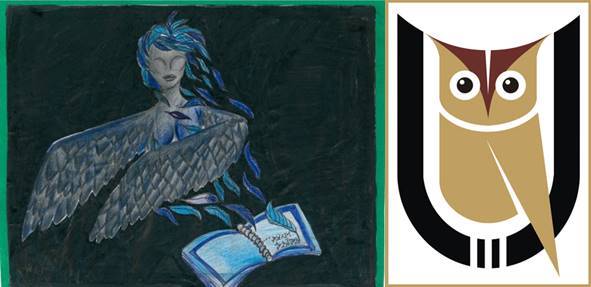HISTORICAL REFLECTIONS: WHY AN ART CLASS?
DOI:
https://doi.org/10.18675/1981-8106.vol29.n61.p269-286Keywords:
Education legislation, The civil-military dictatorship, History of arts educationAbstract
The article seeks to discuss when, how and why art teaching, called artistic education, in the civil-military dictatorship period became part of the school curriculum as a compulsory subject. With qualitative character and documental analysis, we use documents as testimony of a teacher who acted in the period, laws, opinions, resolutions and curriculum proposals that explain the vision of legislators and working teams, as well as guidelines for the teaching of artistic education. The historical period reflects political, social and educational needs claiming by the population and the marked influence of agreements between the Ministry of Education and US agencies. Questions about problems presented by educational reforms and the impasses and difficulties that the school had to face to comply with the law are raised. The research shows that different interpretations of legislators and school institutions determined biases in understanding the role of Arts Education in the educational process, its place in the curriculum and training of the professional who should teach this subject.
References
BARBOSA, A. M. A imagem no ensino da arte. São Paulo: Perspectiva, 2010.
BARBOSA, A. M. (Org.). Inquietações e mudanças o ensino da arte. São Paulo: Cortez; 2002.
BRASIL. A Lei 5692 de 1971 e o Ensino de primeiro grau. Série Ensino Fundamental. Ministério da Educação e Cultura.
BRASIL. Bases para a reformulação de currículos e programas para o ensino fundamental. Ministério da Educação e Cultura. Instituto Nacional de Estudos Pedagógicos, v.10. Impresso por Gráfica Editora do Livro LTDA, Rio de Janeiro, [197?].
BRASIL. Ensino de 1º e 2º graus – Exposição de Motivos n.º273, de 30 de Março de 1971, do Exmo. Sr. Ministro da Educação e Cultura. Ministério da Educação e Cultura. Brasília.
BRASIL. Lei de Diretrizes e Bases da Educação Nacional nº 4024, 20.12.1961. Ministério da Educação e Cultura. Conselho Federal de Educação.
BRASIL. Parecer nº 4833/75. Ministério da Educação e Cultura.
BRASIL. Parecer Conselho Federal de Educação nº 540/77 – CE de 1º e 2º graus. Aprovado em 10/02/77 (Processo s/n). Sobre o tratamento a ser dado aos componentes curriculares previstos no art. 7º da Lei nº 5692/71.
BRITTO, M. L. de A. Propostas e programas de ensino da Secretaria de Educação de Pernambuco de 1923 a 1992: primeiras aproximações do texto e do contexto. Revista Tópicos Educacionais, v. 11, n.1/2, 1993. p. 20-32.
CUNHA, L. A.; GÓES, M. de. O golpe na educação. Rio de Janeiro: Jorge Zahar Editora, 2002.
FAZENDA, I. C. A. Educação no Brasil anos 60: o pacto do silêncio. São Paulo: Edições Loyola, 1988.
MARTINS, M. do C. As Humanidades em Debate: a reformulação curricular e a criação de novas disciplinas escolares. In: OLIVEIRA, M. A. T. de; RANZI, S. M. F. (Orgs.). História das Disciplinas Escolares no Brasil: contribuições para o debate. Bragança Paulista: EDUSF, 2003. p. 141-170.
OLIVEIRA, M. A. T. de. Educação Física Escolar e Ditadura Militar no Brasil (1968-1984): entre a adesão e a existência. Bragança Paulista: EDUSF, 2003.
PERNAMBUCO. Diretrizes para implantação do ensino de primeiro grau. Secretaria de Educação e Cultura. Estado de Pernambuco. Recife, 1972.
PERNAMBUCO. Lei Federal nº 5.692 de 11 de Agosto de 1971. O município na lei Federal. Recife, 1997. Governo do Estado de Pernambuco.
PERNAMBUCO. Proposta Curricular. Ensino de 1ºgrau. Comunicação e Expressão. Recife: Governo do Estado de Pernambuco. Secretaria de Educação, 1981, 4. ed. v. 2.
REIS FILHO, D. A.; MORAES, P. de. 1968: a paixão de uma utopia. Rio de Janeiro: Ed. Fundação Getúlio Vargas, 1998.
SILVA, M. B. e. A inserção da arte no currículo escolar (Pernambuco, 1950-1980). 2004. 198 f. Dissertação (Mestrado em Educação) – Centro de Educação, Universidade Federal de Pernambuco, Recife, 2004.
Published
How to Cite
Issue
Section
License
Authors who publish in this journal agree to the following terms:
a) Authors assign copyright to the journal, with the work simultaneously licensed under the Creative Commons Attribution License that allows sharing of the work with acknowledgment of authorship and publication in this journal.
b) The policy adopted by the Editorial Committee is to assign copyright only after a period of 30 months from the date of publication of the article. After this time, authors interested in publishing the same text in another work must send a letter to the Editorial Committee requesting the release of the assignment of copyright and wait for a response.
c) This journal provides public access to all its content, since this allows greater visibility and reach of published articles and reviews. For more information on this approach, visit the Public Knowledge Project, a project that developed this system to improve the academic and public quality of research, by distributing OJS as well as other software to support the public access publication system to academic sources. The names and email addresses on this website will be used exclusively for the purposes of the journal and will not be available for other purposes. This journal provides open any other party  This work is licensed under a Creative Commons License
This work is licensed under a Creative Commons License











